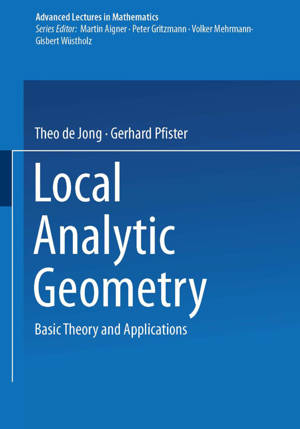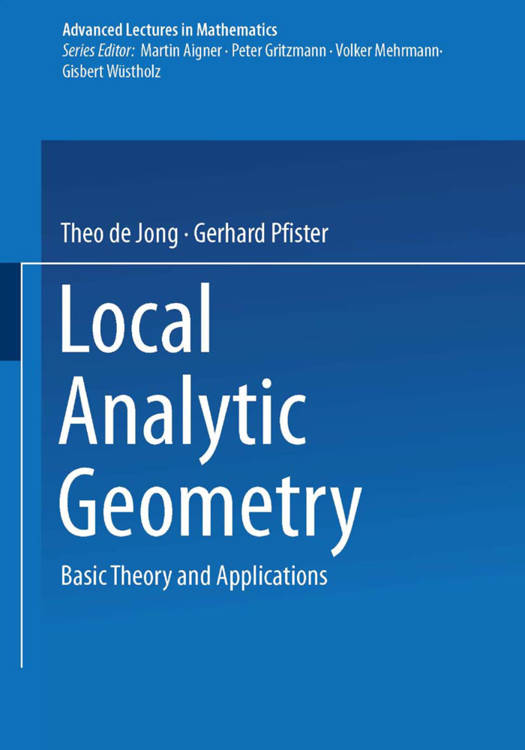
- Afhalen na 1 uur in een winkel met voorraad
- Gratis thuislevering in België vanaf € 30
- Ruim aanbod met 7 miljoen producten
- Afhalen na 1 uur in een winkel met voorraad
- Gratis thuislevering in België vanaf € 30
- Ruim aanbod met 7 miljoen producten
Zoeken
€ 89,95
+ 179 punten
Omschrijving
Algebraic geometry is, loosely speaking, concerned with the study of zero sets of polynomials (over an algebraically closed field). As one often reads in prefaces of int- ductory books on algebraic geometry, it is not so easy to develop the basics of algebraic geometry without a proper knowledge of commutative algebra. On the other hand, the commutative algebra one needs is quite difficult to understand without the geometric motivation from which it has often developed. Local analytic geometry is concerned with germs of zero sets of analytic functions, that is, the study of such sets in the neighborhood of a point. It is not too big a surprise that the basic theory of local analytic geometry is, in many respects, similar to the basic theory of algebraic geometry. It would, therefore, appear to be a sensible idea to develop the two theories simultaneously. This, in fact, is not what we will do in this book, as the "commutative algebra" one needs in local analytic geometry is somewhat more difficult: one has to cope with convergence questions. The most prominent and important example is the substitution of division with remainder. Its substitution in local analytic geometry is called the Weierstraft Division Theorem. The above remarks motivated us to organize the first four chapters of this book as follows. In Chapter 1 we discuss the algebra we need. Here, we assume the reader attended courses on linear algebra and abstract algebra, including some Galois theory.
Specificaties
Betrokkenen
- Auteur(s):
- Uitgeverij:
Inhoud
- Aantal bladzijden:
- 384
- Taal:
- Engels
- Reeks:
Eigenschappen
- Productcode (EAN):
- 9783528031374
- Verschijningsdatum:
- 27/04/2000
- Uitvoering:
- Paperback
- Formaat:
- Trade paperback (VS)
- Afmetingen:
- 178 mm x 254 mm
- Gewicht:
- 689 g

Alleen bij Standaard Boekhandel
+ 179 punten op je klantenkaart van Standaard Boekhandel
Beoordelingen
We publiceren alleen reviews die voldoen aan de voorwaarden voor reviews. Bekijk onze voorwaarden voor reviews.











